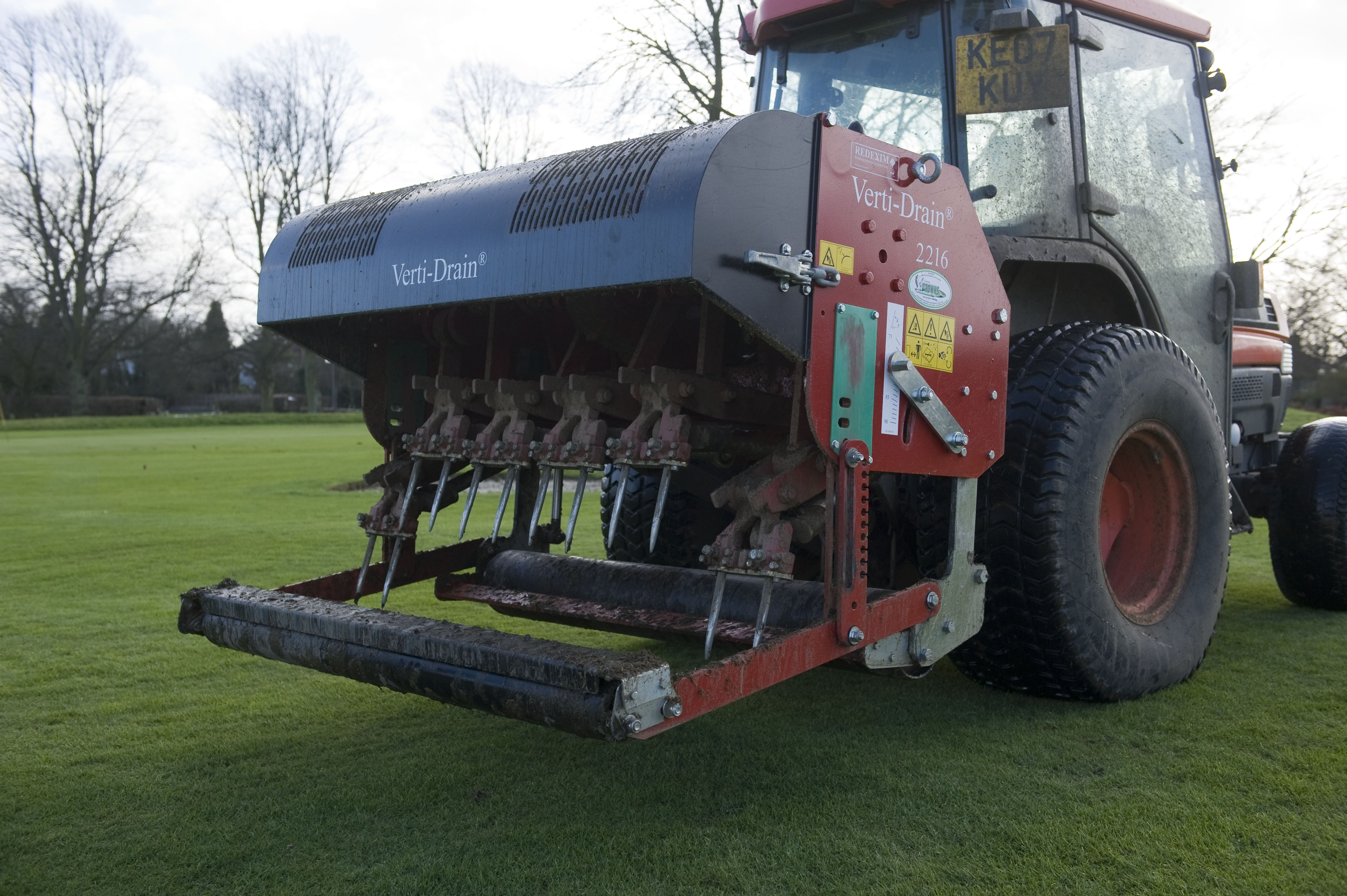Do not roll your outfield to smooth it
Having a smooth outfield can improve the speed and reduce the deviation of ball roll across the outfield.
It might be tempting to roll your outfiel with large smooth-wheeled rollers (including pitch rollers) to flatten and smooth the outfield surface.
Whilst this can increase the ball roll performance in some circumstance it also compacts your outfield soil which:
- significantly reduces drainage performance,
- stresses the grass,
- reduces root depth (which increases drought risk)
- encourages the weed grass annual meadow grass (Poa annua)
- encourages the production of thatch (which further exacerbates poor drainage).
For this reason you should avoid rolling your outfield, and if you do have to roll it – you should de-compact it afterwards using a solid tine aerator or a rotary-knife de-compactor.
So what is the best way to smooth an outfield?
The best way to improve minor surface levels in outfields is to use a large solid tine aerator (sometimes known by the brand name Verti-Drain but other manufacturers of solid tine aerators are available) set with a bit (but not excessive) heave to lift the soil upwards, restructuring it slightly. The rear roller on the aerator then smooths the lifted soil. This provides the double benefit of aerating and smoothing the outfield.
Whilst you might not own a tractor let alone a tractor-mounted solid tine aerator, you can hire in a contractor to do this for you. If you can do this immediately pre-season and post season, you will notice a benefit in grass quality, root depth, outfield drainage performance and smoothness over time.
Are there other ways to de-compact or aerate an outfield?
By far the best way is prevention rather than cure. Try to prevent compaction by making sure that your equipment has low ground pressure tyres at the correct inflation pressure, that you limit the weight of your machines (don’t use machines that are bigger or heavier than you need), that you limit the passage of road vehicles across your outfield and be aware of high traffic routes (such as footpath crossings or the route you take equipment such as rollers out to the square). And don’t roll your outfield!
It is likely that you will need to de-compact your outfield so in addition to the solid tine aerator, other techniques include:
- Hollow tining. A solid-tine aerator can be fitted with hollow tines that remove plugs of soil – if these can be collected or broken down this can help reduce thatch as well as aerating but does not de-compact an outfield apart from in the location of the removed soil.
- Slitting. A slitter (usually star shaped tines on a ground-driven reel) can be used to slice through thatch surfaces or surfaces that have become capped (typically silty soils) which can help drainage, however these machines rarely work much deeper than a few millimetres and so do not provide effective deep de-compaction.
- Rotary-knife decompaction. Rotary knife-de compactors slice the soil more deeply by cutting a blade into the soil to depths of 200-300 mm. These aerators can be effective at de-compacting outfields and improving drainage but will cut lines into the surface – in shrinking and swelling clay soils, these cracks can open as the soil dries which can adversely affect ball roll – so be careful when using on these soils. In shrinking and swelling clay soils this technique might be limited to post-season work.


 Tweet
Tweet